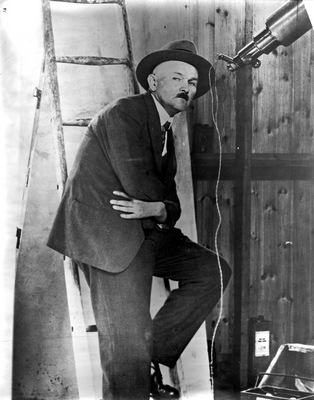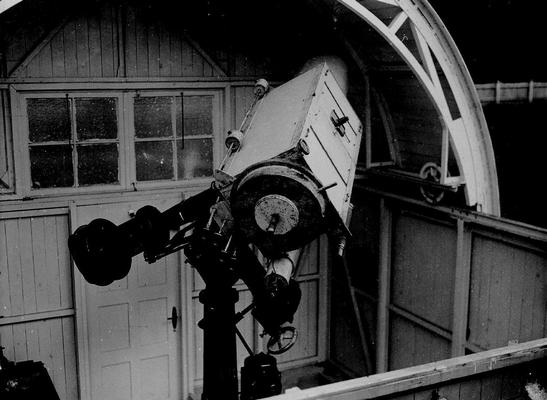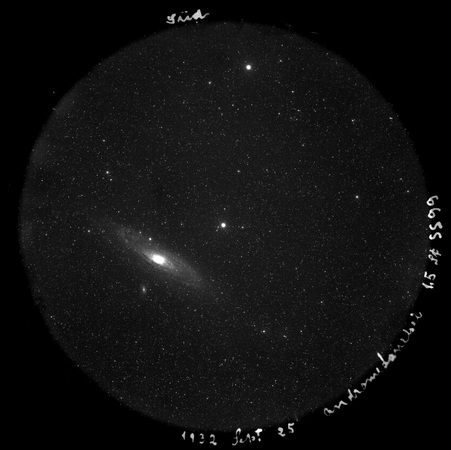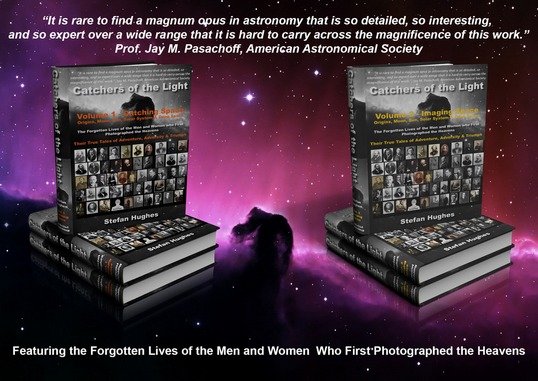'The Optician'

Born: 30th March 1879, Jaani’s Place, Lounakula, Naissaar, Estonia
Died: 1st December 1935, Hamburg, Germany
Bernhard Voldemar Schmidt was without doubt one of the greatest opticians of all time. Almost every amateur has seen or used a telescope which owes its design to Schmidt’s invention. The concept of Schmidt’s design is simple, and in many ways too simple, something which may have contributed to the lateness of its invention. It is a design which could easily have been made 200 years earlier and not left until the twentieth century. Nevertheless since its introduction in 1930 it has proved to be one of the finest telescope optical systems ever created.
In tens of thousands of backyards, gardens, rooftops and amateur observatories all around the world, can be found a telescope whose origin lay in the brain and left hand of an Estonian optician named Bernhard Voldemar Schmidt (1879-1935). In his lifetime he remained largely unrecognized by the astronomical community, so much so that whilst he lived no telescope of his design was ever built by anybody other than himself.
Yet in 1936, less than a year after his death an 18-inch telescope made to his design was completed at the Mount Palomar Observatory. It was a telescope that was to revolutionize both amateur and professional astronomy for decades to come. Of this genius, his fellow Estonian, the astronomer Ernst Julius Opik (1893-1985), wrote:
“Perhaps the greatest advance—it could be called a revolution—in astronomical optics since Newton’s time took place in 1930, when a one-handed invalid from Estonia, who went to Germany to work in optics, constructed at Hamburg Observatory a photographic telescope of a new type. This man was Bernhard Schmidt. Photographic cameras all over the world, based on his invention, are called ‘Schmidt’, sometimes ‘schmidt cameras’ without a capital letter.”
The Schmidt Camera was an optical system of pure genius and simplicity. It had a wide field of view [of around 16 square degrees in his prototype] which not only gave high definition and sharpness across the whole of the photographic plate, its ‘fast’ focal ratio also enabled faint detail to be seen with much shorter exposures than those required by conventional telescopes. It was in effect the perfect Astrograph, which could be manufactured with minimal extra cost when compared to the enormous benefits it offered.
By creating the Schmidtspiegel or Schmidt reflector, Bernhard Schmidt became one of the greatest opticians the world has ever known, in stature equal to the likes of Hans Lippershey, Isaac Newton and Joseph Von Fraunhofer. Although statements as laudable as those given by Opik and the many others made after his death are entirely true, the reality for Schmidt during his life was very different.
For Bernhard Voldemar Schmidt it was a never ending physical and mental battle to get his optical designs recognized; in which his only companions were the ones so often befriended by geniuses – those of frustration, disappointment and loneliness.
To read more on his life and work read the eBook chapter on Bernhard Voldemar Schmidt or buy the eBook 'Catchers of the Light'.

The First Schmidtspiegel, 14-inch 'Corrector' Plate, c1930, Hamburg Observatory: Photograph courtesy of the Hamburg Observatory Museum

'Great Andromeda Spiral' (M31), Bernhard Schmidt, 14-inch Schmidtspiegel, 1932: Photograph courtesy of Hamburg Observatory

Buy the complete eBook or Printed Book at the 'Catchers of the Light' shop